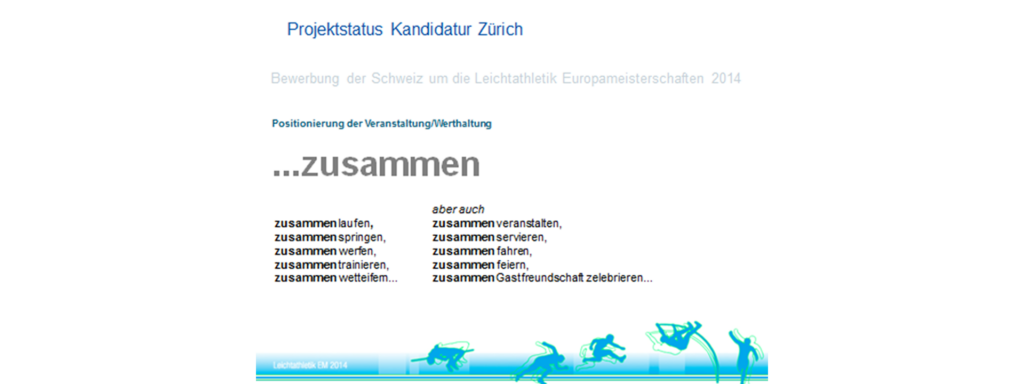I rarely start a meeting without addressing both performance and attitude goals. While performance goals focus on concrete outcomes, attitude goals define how these outcomes are achieved. They have a significant impact on team dynamics and are a crucial factor in building trust.
The English term attitude encompasses both an internal mindset and an external posture – exactly what our attitude goals aim at. It’s not just about the path, but about the “how”, in terms of values, collaboration, and interpersonal dynamics.
Attitude goals are often not consciously defined in many companies, associations, or teams. There is often an assumption that corporate culture develops naturally over time or is shaped by unspoken expectations. However, this is precisely where a problem arises: Without clear attitude goals, there is no guidance for behaviors that sustainably lead a team to success.

Attitude goals are not about defining the path to achieving a goal – that is the role of strategies and plans. Instead, attitude goals determine the mindset and values with which this path is taken. They answer the question: “How do we want to work together to achieve our goals?” This distinction is crucial. While strategies can be flexibly adjusted, attitude goals provide a stable foundation for trust and collaboration.

Aren’t attitude goals just another word for corporate culture? Essentially, yes, as both terms pursue the same objective – but only if a clear corporate culture exists and its values have been explicitly defined. This is often not the case, especially in young companies, project teams, or sports teams. In such cases, consciously defining attitude goals can make a significant difference. They help prevent misunderstandings and play a crucial role in success.
Attitude goals don’t need to be formulated in every detail. Often, one or two key values are enough to shape the team’s overall mindset and serve as a guideline for behaviour.
A striking example of a successfully defined attitude goal is the 2014 European Athletics Championships in Zurich, where I had the privilege of serving as CEO. Even during the bidding phase, it was established that the fundamental “attitude” of this event would be “Zusammen – Insieme – Ensemble”. This principle was not just an empty phrase but a conscious decision that was reflected in all areas.
What did this mean in practice?

The result: High satisfaction among all participants and the lasting success of the event. Switzerland has since developed into an athletics nation and is now among the top eight European countries in terms of performance. Regarding the percentage of young people who participate in at least one athletics competition per year, Switzerland is even among the top three in Europe.
This development is the result of years of dedicated efforts and a consistently lived attitude based on collaboration and mutual appreciation. The 2014 European Athletics Championships in Zurich demonstrated how a clearly defined attitude goal can significantly influence the success of a major event.

The slogan “Just Do It” was created in 1988 by the advertising agency Wieden+Kennedy for Nike. As part of my work in athletics, I had the opportunity to visit Nike’s headquarters in Beaverton, Oregon, multiple times from 1991 onward. Walking around the campus, I could feel how Nike employees had fully embraced “Just Do It” as an attitude goal. The energy, pace, and decisiveness reflected in the slogan were present in every meeting. At the end of each discussion, people would part ways with “Just do it” or “Let’s do it now.”
This “unofficial” attitude goal was soon adopted by athletes as well. Between 1991 and 2016, I worked with or managed numerous top athletes, primarily in track and field but also in other sports. Many of these athletes were determined to be sponsored by Nike, even if it meant accepting a lower-paying contract or using equipment that wasn’t the perfect fit for them. When asked why, they all gave the same answer: “I want to be part of this ‘Just Do It’ community.”
The slogan and the shared attitude goal that emerged from it played a major role in Nike’s impressive growth. In 1989, the company generated $1.7 billion in revenue and, for the first time, became the world’s largest sportswear manufacturer. By 1995, Nike had surpassed $4 billion in revenue and achieved a net profit of approximately $400 million.
Conclusion: Attitude goals can have an impact both internally and externally:

As CEO of FIFA Marketing AG, I launched a great Fair Play campaign— a project I was proud of for many years. The collaboration with UNICEF, in particular, led to powerful images that conveyed the spirit of FIFA Fair Play in an authentic way.
However, attitude goals must be lived. If values are merely promoted and talked about but not consistently upheld, this inevitably leads to a loss of trust—and ultimately, to the opposite of the intended effect.
Today, I can no longer present the FIFA Fair Play campaign as a success story. The public perception of FIFA has become so deeply associated with scandals and the ruthless behaviour of its top executives that a Fair Play logo always elicits a big laugh. What was once a strong attitude goal has been completely undermined by a lack of integrity and inconsistent actions.

In today’s fast-paced digital world, especially in young companies or smaller teams, a clearly defined corporate culture is often lacking. Taking the time to consciously establish not only performance goals but also the desired mindset and shared values – attitude goals – is essential for building trust and shaping a well-coordinated, high-performing team.
Attitude goals are not a simple “soft” factor among others but a strategic necessity. They determine how effectively teams collaborate, how conflicts are avoided, and whether a corporate culture emerges that ensures long-term success. Those who recognize this and put it into practice will build not only more capable but also more resilient and trust-based teams.

Curious about Mission Team and have a few questions?
Excited to dive deeper into what we offer?
Ready to transform your team with an incredible workshop?
We help people work better together 🏆

© 2025 Mission Team, Inc. All rights reserved.